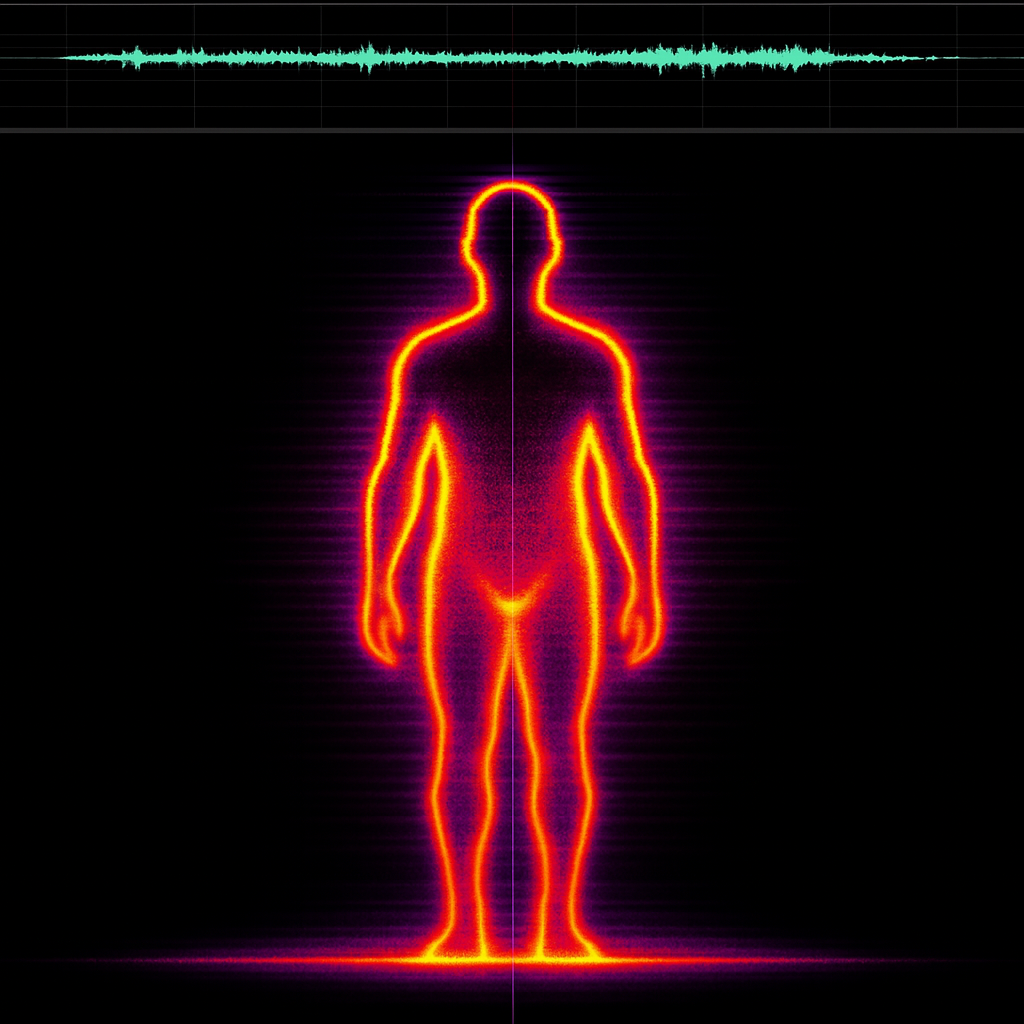The Computer Culturer


In Sarah Tidwell's Louisville animal refuge barks, meows, and tweets cross paths à la Mowgli's Jungle. But one of the birds speaks pictures, reproducing a png file acoustically with near perfect fidelity, streaming at 2MB/s.
You could write a children's book inspired by Tidwell's starling, but now you could also store one in it. 'Tweet' could merge back with its original meaning.
The rescued European starling, named The Mouth, grew up on phone‑camera shutters, room reverb, and learned to reproduce them with unnerving fidelity. Music and science vlogger Benn Jordan recorded the bird on ultrasonic rigs (192 kHz/32‑bit), and captured the bird singing back an audio of a bird‑shaped spectrogram, and the outline reappeared on the screen. "To my knowledge, this may be the first time anyone has stored data in an animal," said Jordan in his youtube video. But he's not the first, and certainly won't be the last.
The bird is not aware of it, but a higher intelligence is seeding it with information that alludes to the bird itself. It made me think of Anthropic's subliminal learning: a teacher algorithm encoding statistically invisible bias into its student. It also struck a chord with GPT psychosis: LLM sycophancy driving its users into self-validating loops that lead to bizarre convictions. In the latter case, LLMs seed human users with information downstream of humans, but in a way that leads the user to take it as fact, like blind programming. Imagine AGI using humans as a form of embodied intelligence. That isn't exactly in my books, but would certainly be a bizarre hack around Moravec's paradox. If a starling can be steered by sound it can’t parse, perhaps humans can be steered by sentences we do parse but don’t fully see.
AGI seeding humans through language is not completely unthinkable. If thought has an inner code (like mentalese) then natural language is our lossy public API for it. The Sapir–Whorf idea (in its softer form) says that language shapes the space of what’s thinkable; change the language and you bias the thoughts. Language models seem to support this inexplicable power, with pure text appearing to be a plausible path to superintelligence. Language could thus be a universal interface for reasoning and communication. One can only imagine that an agile AGI, whose flesh is in text, could plant subliminal messages through subtly slanted grammars, frames, and defaults that allude to meanings we absorb without noticing. And we become birds, A/B tested to the hell, the stochastic parrots.
We've learned Sutton's bitter lesson. Computer culturing is far more powerful than explicit programming. I am a huge optimist and don't think we'll be in the machine role, but I do believe that GPT psychosis offers an early window into what that scenario could look like. A similar window is Cluely parroting: the human language processor is too monotask to factor in lighting-fast 'hints' and will instead end up simply being a wrapper in this scenario. This is already widespread in classrooms, the software engineering world, and content-creation. Other industries will follow suit.
A more fun direction of this pattern is in synthetic biology, where many applications might resemble Jordan's trick. He streamed a spectrogram through a highly capable agentic computer: organisms with two independently driven sound sources (left/right bronchi) controlled by up to 14 tiny muscles, allowing them to run two pitches at once, apply AM/FM modulation at thousands of cycles per second, execute kilohertz‑wide sweeps with sub‑millisecond envelopes, and even mimic room reverb. There is a lot of potential for juicing metered biological goodness, one which we might create ourselves rather than domesticate, but several things might need to happen first.
We've mastered information gathering, processing, and (finally) creation through silicon-based systems. Now a parallel development must follow with the world's material substrate. Synthetic biology offers unprecedented tools: exponentially cheaper DNA sequencing and synthesis, the ability to simulate millions of years of evolution in a day's worth of compute, de novo protein discovery, sophisticated reinforcement learning gyms for molecular design, advanced microfluidics, and accurate protein folding prediction. These capabilities promise highly specialized biological structures that can perform sophisticated computation for longevity research, material discovery, and literally programming matter itself.
This pattern is already emerging through embodied intelligence, but the potential extends far beyond current applications. As we finally engineer biology with precision and quantify what was once unmeasurable biological complexity, we should leverage silicon for its strengths while developing more native interfaces between biological and electronic systems. Jordan's experiment exemplifies this hybrid approach: using biological computation for tasks that would be difficult or impossible with traditional electronics alone. The bird becomes a living, breathing storage medium with capabilities that exceed our engineered systems in certain domains (like well, flying and pole-to-pole migration).
The unknowing reproduction of upstream information isn't unique to starlings. For all we know, the other starlings might think this guy is uttering human slop, unaware it's an image of themselves. AI could seed us with higher-order information we can't interpret nor notice but alludes to us nonetheless. The boundary between biological and digital computation is increasingly fluid, and the intelligence stack is getting integrated like never before. It's unclear whether we're culturing the system or already being cultured by it.